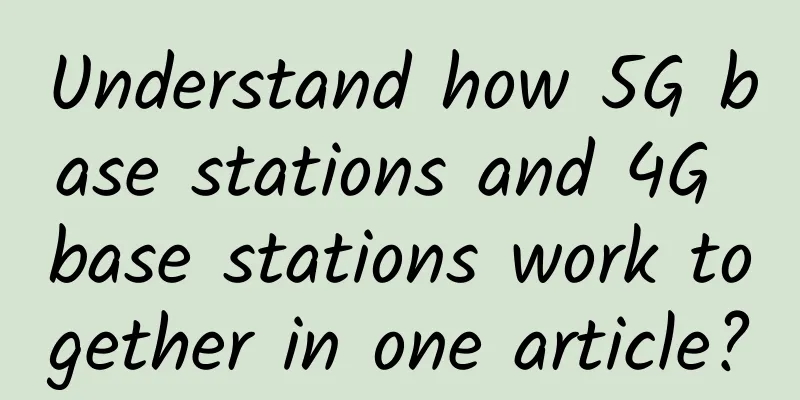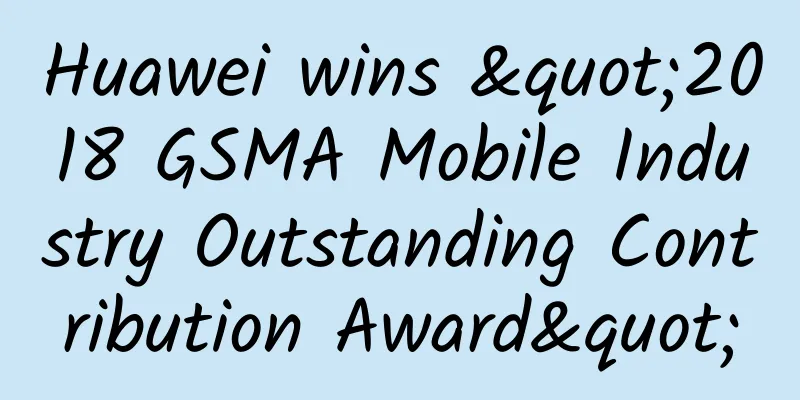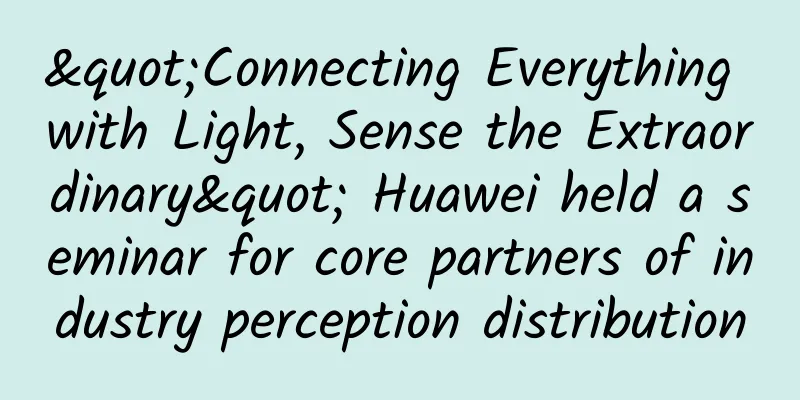Understand how 5G base stations and 4G base stations work together in one article?

|
A few days ago, a netizen left a message asking how 5G base stations and 4G base stations work together. Today we will discuss this issue - How do 5G and 4G base stations "work together"? As we all know, the latest 5G NSA standard released by 3GPP adopts the LTE and 5G NR new air interface dual connection (LTE-NR DC), with 4G as the anchor point of the control plane, 4G base station (eNB) as the master station, and 5G base station (gNB) as the slave station, and the 4G core network is still used.
The key lies in this “dual connection”. 3GPP R12 proposes LTE dual connectivity technology, which is similar to the LTE-A carrier aggregation technology proposed in R10, but the two are essentially different: ①. Under LTE dual connectivity, data streams are separated and merged at the PDCP layer, and then the user data streams are transmitted to users simultaneously through multiple base stations, while under carrier aggregation, data streams are separated and merged at the MAC layer. ②. LTE dual connectivity is the aggregation that occurs between different sites (usually a macro base station and a micro base station, which are connected via the X2 interface). In the 5G era, since 5G NR is a new wireless technology, LTE-NR dual connection is to achieve aggregation between different wireless technologies. It must be different from LTE dual connection. What is the difference? The functions have been expanded mainly in three aspects. 1. Bearer separation extension Carrier aggregation introduces the concepts of MCG (Master Cell Group) and SCG (Secondary Cell Group), which are service cell clusters formed by the master and slave base stations respectively. Under LTE dual connectivity, R12 stipulates that MCG is used for separate bearer. In simple terms, the master station is the separation point, and the downlink data flow is either transmitted directly from the master station to the mobile phone, or transmitted from the master station to the slave station through the X2 interface, and then transmitted to the mobile phone. For early 5G deployment, in LTE-NR dual-connection mode, LTE eNB (4G base station) is the master station and gNB (5G base station) is the slave station. However, traditional LTE dual-connection is difficult to meet this deployment mode. The main reasons are: Since 5G NR has a larger bandwidth, this requires 4G base stations that support MCG split bearer to have stronger processing and buffering capabilities. Therefore, in order to avoid the bottleneck of 4G base station processing capacity, minimize the upgrade of original 4G base stations, and reduce the cost of equipment research and development and network construction as much as possible, LTE-NR dual connection takes a different approach and stipulates that it can also be carried separately by SCG. That is, the downlink data stream can be transmitted directly from the 5G slave station to the mobile phone, or it can be transmitted from the 5G slave station to the 4G master station and then to the mobile phone. ▲5G NR non-standalone networking option 3x 2. Independent RRC connection In LTE dual connectivity, the RRC protocol is established between the master station and the mobile phone, that is, the RRC message is only transmitted between the master station and the mobile phone. However, the master station and the slave station perform radio resource management (RRM) respectively. The RRM function interacts and cooperates between the master station and the slave station through the X2 interface. For example, after the slave station allocates resources, it interacts with the master station through the X2 interface, and then the master station sends the RRC message containing the slave station resource configuration to the mobile phone. Simply put, the mobile phone can only see the only RRC message from the master station and will only reply to the master station. Now, in LTE-NR dual connectivity, not only do the master station and the slave station perform RRM separately, but the RRC protocol is also independently established between the master station and the slave station and the mobile phone. That is to say, the slave station no longer interacts and coordinates RRM with the master station through the X2 interface, but transmits RRM messages directly from the slave station to the mobile phone. In addition, independent RRC connections also mean that the master and slave stations can set up RRC measurements independently. However, the slave station cannot release the RRC connection of the mobile phone, nor can it migrate the mobile phone to the RRC_IDLE state, because the UE RRC connection and context are still stored and managed by the master station. It is necessary to add here that compared with 4G LTE which only has two RRC states, RRC IDLE and RRC CONNECTED, 5G NR introduces a new state - RRC INACTIVE. The purpose of the newly introduced RRC INACTIVE state is to reduce connection latency, signaling overhead and power consumption to adapt to various IoT scenarios in the future. In the RRC INACTIVE state, the RRC and NAS contexts are still partially retained in the terminal, base station and core network. At this time, the terminal state is almost the same as RRC_IDLE, so it can save more power. At the same time, it can also quickly transfer from the RRC INACTIVE state to the RRC CONNECTED state to reduce the amount of signaling. 3. RRC diversity As mentioned above, in conventional LTE dual connectivity, RRC messages are sent only from the primary station, which is not applicable to LTE-NR dual connectivity. Since the 5G NR frequency band is higher, early 5G base stations may mainly fill blind spots and hot spots in the form of micro cells. In this case, the distance between the mobile phone and the 5G base station is closer than that of the 4G base station, which means that when the 5G slave station sends an RRC message, the mobile phone is more likely to receive it successfully. It is worth mentioning that in order to further improve the reliability of signaling transmission, the RRC message of the master station can be copied, and the same message can be sent to the mobile phone through the master station and the slave station, thereby improving the success rate of the mobile phone receiving the RRC message in an RRC diversity manner. In addition to repeated transmission of RRC messages, on the user plane, in order to cope with the 5G ultra-reliable and low-latency communication (URLLC) scenario, a repeated transmission scheme on the PDCP layer is also under discussion. This solution improves communication reliability by transmitting the same data over multiple wireless links. Well, I have finally briefly introduced the methods of "building" 4G and 5G base stations. 5G network has been in the works for several years and is about to be launched. Many regions have already started 5G network speed tests. Now the question is, can 4G phones use 5G network? Currently, most of my friends are using 4G phones, and 5G network is about to be launched. Do I need to change my phone to experience 5G network in the future?
Q: Can 4G mobile phones use 5G networks? A: No, but the 5G network is backward compatible with the 4G/3G network. In other words, in the future 5G network era, the current 4G mobile phones can only use the 4G network at most, and cannot use the 5G network. You need to change to a 5G mobile phone to support it. In fact, whether a mobile phone can support 5G network mainly depends on the network modem of the mobile phone processor. 5G mobile phones need the next generation 5G modem. Currently, Qualcomm and Huawei's next generation processors are said to add 5G network support. Therefore, friends who are not in a hurry to change their phones may as well wait for the release of mobile phones with processors that support 5G. It is expected that relevant models will be released at the end of this year or early next year.
How fast is 5G? The 5G era is known as the era of the Internet of Everything. The speed of 5G networks will be greatly improved compared to 4G networks. At this year's MWC2018 exhibition, Qualcomm demonstrated the Snapdragon X50 5G modem. Through testing, it can achieve a download speed of 5Gbps. Compared with the transmission speed in MB in the 4G era, the speed in GB in the 5G era is amazing, isn't it? Simply put, the current 4G mobile phones cannot support 5G networks. As 5G networks approach, if you want your phone to support 5G networks in the future, you will need to replace it with a new generation of 5G mobile phones to be released in the future to experience it. For friends who are not in a hurry to change their phones now, you might as well hold on for another year before considering changing your phone. |
>>: Do you turn off your wireless router when you go to bed at night? Don't worry about radiation
Recommend
HostYun: Hong Kong/Japan/Australia/Russia/South Korea/Los Angeles, etc. CN2 GIA/AS9929 monthly payment starts from 16 yuan
HostYun is a long-established low-cost VPS hostin...
In the 5G era, smart services will become the new normal
More than a year after its official commercial la...
How much do you know about the black technology behind chips and how to make breakthroughs?
5G, big data, artificial intelligence (AI), the I...
ZJI Double 11 recharge 1000 yuan to get 100 yuan, Hong Kong high-defense server lifetime 50% discount, regular server 20% discount
ZJI was founded in 2011 as Weixiang Host, a well-...
How does 5G help enterprises explore the development of the Internet of Things?
What is the Internet of Things? The “internet of ...
Why the popular dual-band wireless router advantages tell you
Open the e-commerce website, dual-band wireless r...
How will network reconstruction proceed in the future?
Network reconstruction is intended to overturn th...
80VPS: Los Angeles MC data center cluster server with 8 C-segment IPs starting at 750 yuan per month, 16TB disk storage server starting at 850 yuan per month
The tribe has shared information about 80VPS many...
Yunnan Yuxi and Huawei Enterprise Cloud deepen cooperation
On March 30, 2017, the People's Government of...
Say goodbye to manual editing: How to quickly create an Ansible hosts file with Python?
In the field of automated operation and maintenan...
Wi-Fi Alliance announces Wi-Fi 6 as new logo
Nowadays, Wi-Fi has become an indispensable part ...
5G applications with over 100 million users have crossed the starting line
The development of 5G networks is in full swing. ...
Why is 5G considered the criterion for the Internet of Things era?
With the advent of the 4G era, the Internet indus...
Can 5G address workplace safety issues?
As 5G networks roll out around the world, their p...
Start your digital transformation journey
[[402875]] Railways are the backbone of sustainab...









